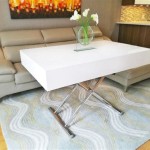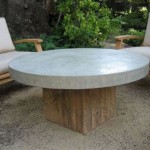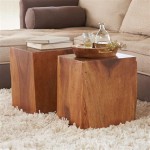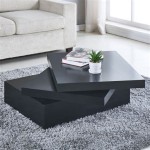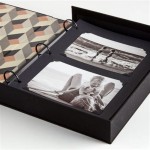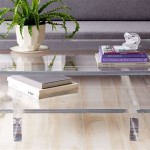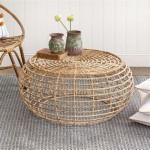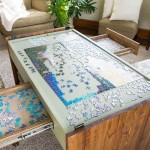Modern Dining Room Table Decor: A Comprehensive Guide
The dining room table serves as a central gathering point within a home, transcending its functional purpose to become a statement piece indicative of personal style and design sensibility. Modern dining room table decor focuses on clean lines, functional elegance, and a blend of materials to create a welcoming and aesthetically pleasing environment. Understanding the principles of modern design and how they apply to table settings will allow for the creation of a space that reflects a contemporary lifestyle.
Successful dining room table decor requires careful consideration of several factors, including the table's size and shape, the overall style of the room, and the intended use of the space. A large rectangular table in a formal dining room will require a different approach than a small round table in a breakfast nook. Moreover, the decor should complement, not compete with, the surrounding furniture and architectural elements. Lighting also plays a crucial role, enhancing the visual appeal of the table setting and creating ambiance.
Key Considerations for Modern Dining Table Decor
Modern dining table decor prioritizes simplicity and functionality. This does not equate to a minimalist approach devoid of personality; rather, it emphasizes curated selections that serve a purpose and contribute to the overall visual harmony. Selecting the right centerpiece, choosing appropriate tableware, and incorporating textiles thoughtfully are all essential aspects of creating a modern dining tablescape.
A. Choosing the Right Tablecloth or Runner:
The foundation of any table setting begins with a tablecloth or runner. In a modern setting, opting for minimalist options is often the most effective choice. A solid-colored tablecloth in a neutral shade, such as white, gray, or beige, provides a clean backdrop that allows the other elements of the table setting to stand out. Linen or cotton fabrics are popular choices due to their texture and understated elegance. Alternatively, a runner can be used to add a touch of color or pattern without covering the entire table. Runners are especially effective on tables with attractive wood grain or a unique finish that one wishes to showcase.Consider the occasion when choosing a tablecloth. For formal dinners, a crisp, ironed tablecloth is appropriate. For more casual gatherings, a simpler runner or even placemats might suffice. The size of the tablecloth or runner is also important. It should drape evenly on all sides of the table, usually with an overhang of 10 to 12 inches. A runner should be proportional to the length of the table, leaving adequate space on either end.
B. Selecting the Right Centerpiece:
The centerpiece is the focal point of the dining table, drawing the eye and setting the tone for the entire setting. In a modern context, the centerpiece should be simple, elegant, and not obstruct the view across the table. Floral arrangements are a classic choice, but instead of elaborate, overflowing bouquets, consider minimalist arrangements with a few carefully chosen stems in a sleek vase. Orchids, calla lilies, or single-stemmed roses are excellent options. Succulents or air plants in geometric planters also make for interesting and low-maintenance centerpieces.Alternatively, consider using non-floral elements as a centerpiece. A collection of candles in varying heights, arranged on a decorative tray, can create a warm and inviting atmosphere. Sculptural objects, such as abstract metal art or a collection of smooth stones, can add an artistic touch. When selecting a centerpiece, consider the height. It should be low enough that diners can easily see each other across the table. If using tall elements, ensure they are narrow enough not to obstruct the view.
C. Incorporating Tableware and Linens:
The tableware and linens should complement the overall aesthetic of the dining room. Opt for simple, modern dinnerware with clean lines and minimal embellishment. White porcelain is a timeless choice that works well with any decor. Plates with subtle patterns or textured surfaces can add visual interest without overwhelming the setting. Consider the shape of the plates as well. Square or rectangular plates can add a contemporary touch.Flatware should also be simple and elegant. Stainless steel with a minimalist design is a classic choice. Consider the weight and balance of the flatware when making a selection. It should feel comfortable to hold and use. Napkins can be used to add a pop of color or texture to the table. Linen napkins are a luxurious choice, while cotton napkins are a more practical option for everyday use. Fold the napkins neatly and place them on the plates or to the side of the flatware.
Material Selection and Color Palette
The materials and color palette used in modern dining table decor play a significant role in establishing the overall ambiance. A cohesive and well-considered selection of materials and colors will contribute to a visually appealing and harmonious dining space. Understanding the impact of different materials, such as wood, metal, glass, and ceramics, is crucial for creating a balanced and elegant table setting.
A. Material Harmony:
Modern design often embraces a mix of materials to create visual interest and texture. Combining wood, metal, and glass elements can add depth and sophistication to the table setting. For example, a wooden table can be paired with metal candle holders and glass vases to create a balanced and visually appealing arrangement. The key is to ensure that the materials complement each other and do not clash. Consider the texture and finish of each material. A polished metal surface will reflect light and add a touch of glamour, while a rough-hewn wood surface will add warmth and character.Ceramics are another important material to consider when selecting tableware. Opt for high-quality ceramics with a smooth finish. Porcelain and stoneware are popular choices for their durability and aesthetic appeal. Consider the color and pattern of the ceramics as well. Neutral colors and simple patterns are generally the best choice for a modern setting. However, a pop of color can be added with a few carefully chosen accent pieces.
B. Strategic Use of Color:
The color palette of the dining table should complement the overall color scheme of the room. Neutral colors, such as white, gray, beige, and black, are often used as a base for modern dining table decor. These colors create a clean and sophisticated backdrop that allows other elements to stand out. However, adding pops of color can add visual interest and personality to the setting. Consider using accent colors in the centerpiece, tableware, or linens.When choosing accent colors, consider the mood you want to create. Warm colors, such as red, orange, and yellow, can create a warm and inviting atmosphere. Cool colors, such as blue, green, and purple, can create a more calming and relaxing atmosphere. Consider the season as well. Lighter colors are often used in the spring and summer, while richer, darker colors are used in the fall and winter. The use of metallic accents, such as gold or silver, can add a touch of glamour to the table setting, especially for formal occasions.
C. Lighting Considerations:
Lighting is critical for creating the desired atmosphere in a dining room. The type of lighting used can greatly affect the mood and ambiance of the space. Consider the positioning of light fixtures to highlight the table setting and create a warm and inviting glow. Overhead lighting, such as a chandelier or pendant light, is a common choice for dining rooms. The fixture should be centered above the table and provide ample illumination. Dimmer switches are useful for adjusting the lighting to suit different occasions.In addition to overhead lighting, consider adding accent lighting to the table setting. Candles are a classic choice for creating a romantic and intimate atmosphere. Use candle holders in varying heights to add visual interest. Table lamps can also be used to add accent lighting. Place the lamps on a sideboard or console table near the dining table. The lamps should provide soft, warm light that complements the overhead lighting. Natural light is also an important consideration. If possible, position the dining table near a window to take advantage of natural light during the day.
Specific Modern Decor Themes
While maintaining a consistent adherence to modern principles, variations in specific themes can further personalize the dining room table decor. These themes can range from minimalist Scandinavian styles to industrial-chic designs, each incorporating unique elements that reflect individual tastes and preferences. Exploring these themes allows for a tailored approach to modern dining table decor that complements the overall aesthetic of the home.
A. Scandinavian Simplicity:
Scandinavian design is characterized by its simplicity, functionality, and use of natural materials. In a Scandinavian-inspired dining table setting, focus on clean lines, muted colors, and natural textures. Use a wooden table as the base and pair it with simple white dinnerware. Add natural elements, such as greenery or wooden candle holders, to the centerpiece. Use linen napkins and placemats in neutral colors. The overall effect should be calming, serene, and uncluttered.Plants play a significant role in Scandinavian decor. Incorporate potted plants on the table or nearby shelves to bring a touch of nature indoors. Choose plants with simple, clean lines, such as succulents or ferns. Avoid overly ornate accessories. The focus should be on functionality and simplicity. Candles are also an important element of Scandinavian design. Use simple, unscented candles in minimalist candle holders to create a warm and inviting atmosphere.
B. Industrial Chic:
Industrial chic design embraces raw materials, exposed architectural elements, and a neutral color palette. In an industrial-inspired dining table setting, consider using a table with a metal base and a reclaimed wood top. Pair it with simple metal chairs. Use concrete or metal candle holders as a centerpiece. Add industrial-inspired accessories, such as metal serving trays or vintage-inspired utensils. The overall effect should be edgy, urban, and slightly rustic.Exposed brick or concrete walls can enhance the industrial feel of the dining room. Use metal pendant lights to illuminate the table. Consider using vintage-inspired glassware to add character to the setting. Use a simple, neutral-colored tablecloth or runner. Avoid overly ornate or fussy details. The focus should be on raw materials and minimalist design.
C. Mid-Century Modern Flair:
Mid-century modern design is characterized by its clean lines, organic shapes, and use of vibrant colors. In a mid-century modern dining table setting, consider using a table with tapered legs and a colorful laminate top. Pair it with Eames-style chairs. Use geometric-patterned tableware and linens. Add a sculptural centerpiece, such as a ceramic vase or a metal sculpture. The overall effect should be playful, stylish, and retro.Incorporate pops of color, such as orange, yellow, or turquoise, to add visual interest. Use wood accents to warm up the space. Consider using a Sputnik-style chandelier to illuminate the table. Use vintage-inspired accessories, such as a record player or a vintage lamp, to add character to the setting. The key is to embrace the playful and stylish aesthetic of mid-century modern design.

Modern Dining Room Design Decor Ideas Cb2

900 Best Dining Room Tables Ideas In 2024 Decor Design House Interior

Organic Modern Summer Table Decor Taryn Whiteaker Designs

Modern Dining Room Design Decor Ideas Cb2

Dining Room Table Centerpieces
:max_bytes(150000):strip_icc()/meinhausstaging_93349435_120034946321375_6031682904950799264_n-eaa56a966c474e6f8eca31a4830826dc.jpg?strip=all)
15 Modern Dining Room Ideas

Dining Room Table Decor Ideas How To Decorate Your

40 Glass Dining Room Tables To Revamp With From Rectangle Square Round Table Centerpieces

55 Everyday Dining Table Decor Ideas Craftionary

Modern Transitional Dining Room Decor Taryn Whiteaker Designs
Related Posts

